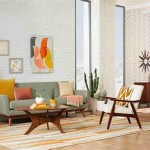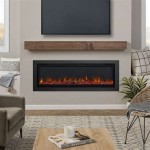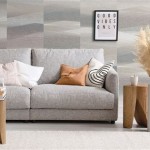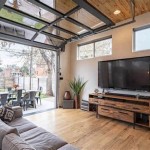Yellow and Blue Living Rooms: A Harmonious Design Study
The combination of yellow and blue in a living room creates a dynamic yet balanced aesthetic. These two colors, contrasting yet complementary, offer a wide range of possibilities in interior design, from creating a bright, cheerful space to a sophisticated and calming retreat. Understanding the nuances of these colors, their various shades, and how they interact is crucial for achieving a successful design.
The Psychological Impact of Yellow and Blue
Yellow is often associated with optimism, happiness, and energy. It evokes feelings of warmth and can stimulate mental activity. In interior design, yellow can make a room feel larger and more inviting. However, it's essential to use yellow judiciously, as excessive use can lead to overstimulation and even anxiety in some individuals. The intensity of the yellow shade significantly impacts its effect; pale yellows create a gentle, airy atmosphere, while vibrant yellows inject a strong dose of energy.
Blue, on the other hand, is generally linked to calmness, tranquility, and stability. It is a color that promotes relaxation and can lower blood pressure. Blue shades can range from light, airy sky blues to deep, sophisticated navy blues, each evoking different moods. Light blues create an open and spacious feeling, while darker blues add depth and drama to a room. The psychological effect of blue makes it a popular choice for bedrooms and living rooms, spaces where relaxation is prioritized.
Achieving Balance Through Color Selection
The key to a successful yellow and blue living room lies in achieving a harmonious balance between these two powerful colors. This balance is not necessarily a 50/50 split; instead, it involves carefully considering the proportions, shades, and undertones of each color to create a cohesive and visually appealing space. One strategy is to select one color as the dominant hue and use the other as an accent. For instance, a living room with primarily blue walls can be enlivened with yellow throw pillows, artwork, and accessories.
Furthermore, the specific shades of yellow and blue chosen are critical. A bright, saturated yellow paired with a strong, electric blue might create a visually jarring effect. A more subtle approach might involve using a muted yellow, such as a buttery cream or a soft ochre, alongside a calming, dusty blue or a sophisticated navy. The specific combination depends on the desired aesthetic and the overall architectural style of the room. Consideration should also be given to the natural light in the room. A room with ample natural light can handle bolder shades, whereas a room with limited light might benefit from lighter, brighter hues to maximize the feeling of spaciousness.
Adding neutral tones can also enhance the balance. White, beige, and gray can serve as a backdrop to allow the yellow and blue to shine without overwhelming the space. These neutrals can be incorporated through walls, furniture, and textiles, providing visual relief and preventing the color scheme from becoming too intense. Wood tones also work well with both yellow and blue, adding warmth and natural texture to the design.
Practical Application: Design Elements and Considerations
Implementing a yellow and blue color scheme requires careful consideration of various design elements within the living room. This includes walls, furniture, textiles, and accessories, and how each contributes to the overall aesthetic.
Walls: The color of the walls establishes the foundation of the room's color scheme. A blue wall can create a serene and calming atmosphere, while a yellow wall injects energy and warmth. Alternatively, neutral walls can provide a blank canvas to showcase yellow and blue accents. Paint finishes also play a role; matte finishes tend to absorb light, while glossy finishes reflect it, impacting the perceived intensity of the color.
Furniture: Upholstered furniture offers a significant opportunity to incorporate yellow and blue. A blue sofa can be paired with yellow accent chairs, or vice versa. Consider the texture and pattern of the upholstery fabric; a plush velvet adds a touch of luxury, while a linen fabric creates a more relaxed and casual feel. Incorporating wood furniture can add warmth and contrast against the cooler tones of blue and yellow.
Textiles: Throw pillows, blankets, curtains, and rugs are excellent ways to introduce pops of color, pattern, and texture. Yellow and blue throw pillows can instantly brighten up a sofa, while a blue rug can ground the space and add visual interest. Curtains can either complement or contrast the wall color, depending on the desired effect. Experimenting with different patterns and textures can add depth and personality to the room. For example, a geometric pattern incorporating both yellow and blue can add a modern touch, while a floral pattern can create a more traditional and romantic feel.
Accessories: Accessories such as artwork, lamps, vases, and decorative objects provide the finishing touches to the design. Artwork featuring yellow and blue hues can tie the color scheme together, while lamps with yellow or blue shades can add subtle pops of color. Vases filled with flowers in complementary colors can further enhance the overall aesthetic. The strategic placement of accessories is crucial for creating a balanced and visually appealing space. Avoid cluttering the room with too many accessories; instead, focus on a few key pieces that complement the overall design.
Lighting: The type of lighting in a living room can significantly impact how colors appear. Natural light enhances the vibrancy of colors, while artificial light can alter their appearance. Warm lighting tends to bring out the yellow tones, while cool lighting accentuates the blue tones. Using a combination of natural and artificial light can create a balanced and inviting atmosphere.
The Integration of Patterns: The use of patterns is a crucial aspect of designing a yellow and blue living room. Patterns can add visual interest, depth, and personality to the space. Incorporating patterns effectively requires careful consideration of the scale, color, and style of the patterns used. Geometric patterns, floral patterns, and abstract patterns can all be used to create different effects.
Geometric Patterns: Geometric patterns, such as stripes, chevrons, and hexagons, can add a modern and contemporary touch to a yellow and blue living room. These patterns can be incorporated through textiles, such as throw pillows, rugs, and curtains. Using geometric patterns in a limited color palette can create a sophisticated and minimalist aesthetic. For example, a blue and white chevron rug can add visual interest without overwhelming the space. A yellow and gray geometric pattern can provide a subtle contrast to the blue elements in the room.
Floral Patterns: Floral patterns can add a touch of elegance and romance to a yellow and blue living room. These patterns can be incorporated through wallpaper, upholstery, and textiles. The scale of the floral pattern should be considered in relation to the size of the room. A large-scale floral pattern can be overwhelming in a small room, while a small-scale floral pattern might get lost in a large room. The colors within the floral pattern should complement the overall color scheme of the room. For example, a blue and yellow floral wallpaper can create a focal point in the room. Yellow and blue floral throw pillows can add a touch of whimsy to a blue sofa.
Abstract Patterns: Abstract patterns can add an artistic and eclectic touch to a yellow and blue living room. These patterns can be incorporated through artwork, rugs, and textiles. Abstract patterns can be bold and vibrant or subtle and muted, depending on the desired effect. Using abstract patterns with varying scales and textures can add depth and visual interest to the room. For example, a large abstract painting featuring yellow and blue hues can serve as a statement piece in the room. A textured rug with an abstract pattern can add warmth and comfort to the space.
Mixing and Matching Patterns: Mixing and matching patterns can create a dynamic and visually engaging space in a yellow and blue living room. However, it is important to follow some guidelines to ensure that the patterns work together harmoniously. Varying the scale of the patterns helps to prevent the space from feeling too busy. Combining different types of patterns, such as geometric, floral, and abstract, can add depth and complexity to the design. Ensuring that the patterns share a common color palette, such as yellow and blue, helps to tie the look together.
The Importance of Proportion: The proportion of yellow and blue in a living room is crucial for achieving a balanced and harmonious aesthetic. The proportion of each color depends on the size of the room, the amount of natural light, and the desired mood. A room with ample natural light can handle a higher proportion of darker colors, such as navy blue, while a room with limited natural light might benefit from a higher proportion of lighter colors, such as pastel yellow. The desired mood also plays a role in determining the proportion of each color. A room designed for relaxation might benefit from a higher proportion of blue, while a room designed for energy and activity might benefit from a higher proportion of yellow.
One common approach is to use one color as the dominant hue and the other as an accent color. For example, a living room with blue walls can be accented with yellow throw pillows, artwork, and accessories. Conversely, a living room with yellow walls can be accented with blue furniture, rugs, and curtains. This approach allows for a balanced and visually appealing color scheme without overwhelming the space.
Another approach is to use a neutral color, such as white, gray, or beige, as the dominant hue and then incorporate yellow and blue as accent colors. This approach creates a more subtle and sophisticated color scheme that is less intense and more versatile. The neutral color serves as a backdrop for the yellow and blue accents, allowing them to stand out without overpowering the space. This approach is particularly useful in smaller living rooms where a large proportion of bold colors can make the space feel cramped.
Ultimately, the key to achieving a balanced proportion of yellow and blue is to experiment and find what works best for the individual space and personal preferences. Consider the overall design aesthetic of the room, the amount of natural light available, and the desired mood when determining the proportion of each color. With careful planning and attention to detail, a yellow and blue living room can be a beautiful and inviting space.

Yellow And Navy Living Rooms Design Ideas

Spring Home Tour With Vibrant Yellows And Pretty Blues

40 Blue Living Room Ideas Transform Your Space With Calming Hues

10 Navy And Yellow Living Room Ideas Blue Designs

Yellow And Navy Living Rooms Design Ideas

Yellow And Blue Interiors Living Rooms Bedrooms Kitchens

How To Decorate With Yellow The Right Way According Designers

13 Inviting Modern Living Room Ideas To Elevate Your Home Decor

15 Ways To Infuse Your Home With Bright Yellow

Color Combo Crush Yellow And Blue Stripes Whimsy








